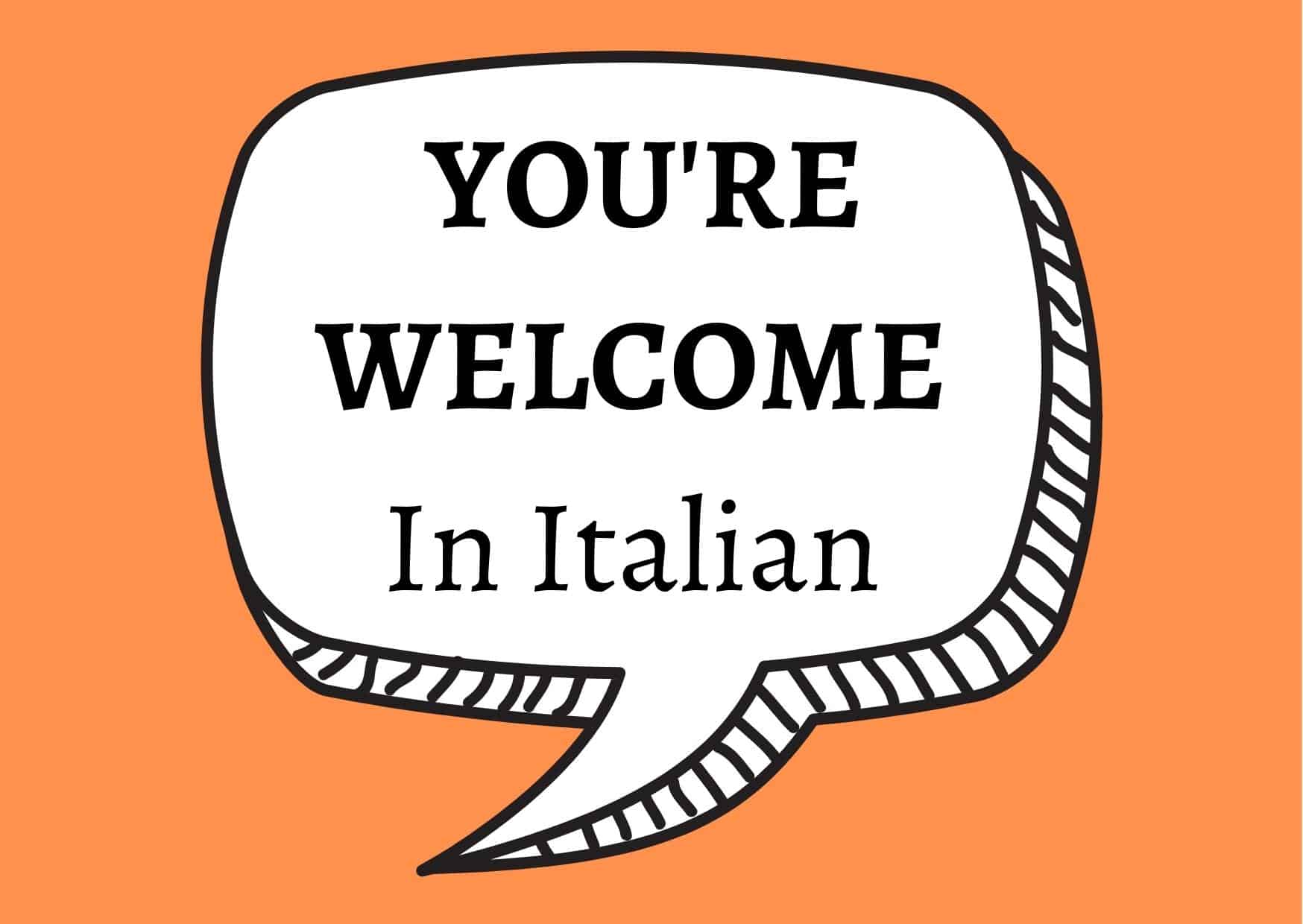
Ur YouTube
One common informal way to say 'you're welcome' is 'di niente', which literally means 'of nothing'. It's a simple and casual way to acknowledge someone's gratitude. Another option is 'figurati', which can be translated as 'don't mention it' or 'it's nothing'. This expression is often used among friends or in informal settings.

Ur ☺️ YouTube
Saying "you're welcome" in Italian is not limited to just one phrase. In this guide, we'll explore seven different ways to say "you're welcome" in Italian, from the common " prego " to the more formal "non c'è di che ." Let's get started! Italian words Maria Start here Free access I'll take you to your shiny new student dashboard. Pro study tips

Ur r/historymeme
How To Say "You're welcome!" In 45 Languages. Hungarian Szívesen! Korean 천만에요. Castilian Spanish De nada. Japanese どういたしまして. French Il n'y a pas de quoi. Mandarin Chinese 不客气. German Gern geschehen!

Ur YouTube
2 Answers Sorted by: 6 Prego - ? Prego: for the origins of the word you may want to have a look at this. No affatto - Not at all We don't use « no affatto», but rather di niente or di nulla or (more colloquial) macché, which is similar to non c'è di che.

YOU’RE in Italian Getting To Know Italy
Prego is the easiest and most common way to say you're welcome in Italian, even though to most Americans the word is synonymous with jarred pasta sauce. It is versatile and works in both informal and formal situations. The direct translation of prego is I pray, from the Italian verb pregare.

Ur YouTube
Popular Ways to Thank People (in Italian) You can say "thank you" in many ways, but these are the most frequent ones in spoken Italian: GRAZIE = thanks. GRAZIE MILLE = thanks so much. MOLTE GRAZIE = many thanks. You can use these options in both formal or informal situations . Check their pronunciation below.

ur 😽 YouTube
Welcome in Italian is "benvenuto", but does that really help? How you say You are welcome in Italian can affect the subtext. That is, the overall meaning of the exchange. The following replies will further explain how Italians deal with parting words. Of course, you will learn / revisit the basics first.

Ur 😉 YouTube
It's just as important to know how to express your willingness and pleasure to help someone, as it is to say " grazie" (thank you). That is why you should definitely master the most common words and expressions to say things like "No problem!", and "You're very welcome" in Italian, plus how to use them in different contexts.

ur to my new favorite YouTube
welcome [ˈwɛlkəm ] adjective (gen) gradito /a welcome! benvenuto/a! welcome to Britain! benvenuti in Gran Bretagna! to be welcome (person) essere il (la) benvenuto/a welcome back! bentornato/a! you will always be welcome here qui sarai sempre il benvenuto to make sb welcome accogliere bene qn you're welcome (after thanks) prego

Ur YouTube
More Examples of You're welcome in Italian. Di nulla! You're welcome! Source . Si figuri. You're welcome. Source . Figurati. You're welcome. Source . Looking for something a bit more visual? Check out our infographic on You're welcome in Italian with example sentences and translations. Tweet. Useful Links. WordReference; Wiktionary; Google.

ur YouTube
1. Prego Prego is the easiest and most popular way to say you're welcome in Italian. Besides meaning you are welcome, prego also means please in some contexts and is the first person singular of the present tense of the verb pregare (to pray). - Grazie per il tuo aiuto! - Prego! 2. Di niente Di niente is as much used as prego, andit means nothing.

Ur Pizza
slang; texting; and also give you a phonetic transcription of all these expressions so that you'll pronounce them like a native. How to say thank you in Italian If you're looking for the short answer, thank you in Italian is grazie.

Wood Sign//Italian//Benvenuto Sign//Italian Sign//Olive
You're welcome It is a very common word and is used in both formal and informal settings, so you can say prego to a kid as well as to your boss at work or a complete stranger you encounter in your journey throughout Italy. It's polite, simple and direct. Grazie per avermi aiutato a pulire il prato. - Prego. Thank you for helping me clean the lawn.
ur on Spotify
Grazie mille literally means a thousand graces or a thousand thanks. In English it translates to thank you very much. If you hear someone say this, they're very grateful for whatever someone else did for them. Tried and True: Prego - The wordprego is the easiest way you can say "you're welcome" to someone in Italian.

Italian Chef Flag Floor Decal Etsy
Google's service, offered free of charge, instantly translates words, phrases, and web pages between English and over 100 other languages.

Ur YouTube
English. A: Hey, thanks for all your help with that test! B: That's ok. Figurati/Si figuri! - Don't worry about it! As a reply to " grazie ", we can also say Figurati! and Si figuri! these two forms, convey the same meaning: "Oh, don't mention it!". Figurati is the informal form and Si figuri is the formal form.